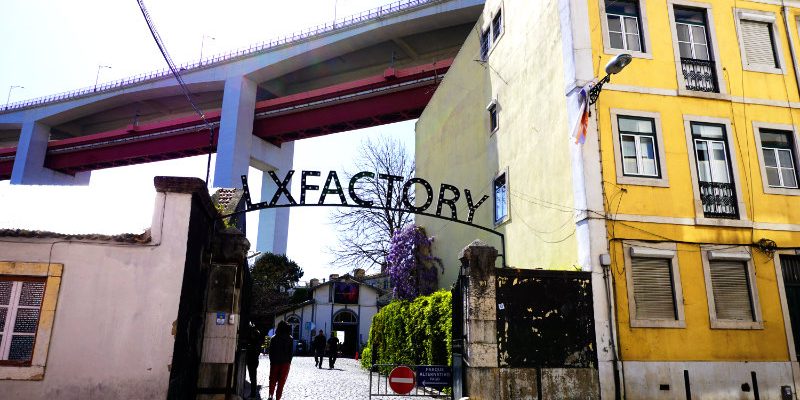Lisbon is the capital of Portugal, a large colorful metropolis with a multicultural society. A city trip to Lisbon is one of the most beautiful destinations you can visit.
Lisbon is a city where the cultural heritage is clearly visible: fancy architecture, the music of Fado, stories of sailors who brought South American and African influences to the country.
During a city trip to Lisbon you can enjoy the big city flair with traditional influences and discover a lot.
City trip to Lisbon – our tips

Rain in Lisbon and no desire to sit in the hotel? No problem! There is so much to discover in Lisbon that there is enough variety even in bad weather.

The viewpoints in Lisbon offer their visitors something very special - nowhere is the view the same and everywhere the impressions are simply unique.

The variety of museums in Lisbon is impressively large. Museums in Lisbon are offered on a wide variety of themes, whether trams and carriages or history and culture - there is something for every taste.

The Hieronymite Monastery or Mosteiro dos Jerónimos is located in Lisbon's Belém district. It has been a UNESCO World Heritage Site since 1983. You should not miss a visit to the site when you go on a city trip to Lisbon.

One of the most impressive monuments in Lisbon is the Padrão dos Descobrimentos, right on the banks of the Tagus. What many visitors don't know, however, is that it is also one of the most beautiful viewpoints in the city.

The Castelo de São Jorge is located high above Lisbon and offers an excellent view over the city. You can visit the fortress and castle ruins daily.

Hardly any other building has captivated us as much as the Ponte 25 de Abril. We walked across the bridge on our first visit to the city, but this time we were drawn to a breathtaking viewing platform, the Experiência Pilar 7.

At the edge of the large Praca do Comércio stands a triumphal arch that forms the entrance to the historic old town. On the Arco da Rua Augusta is one of the most beautiful viewing platforms in the city.

The National Carriage Museum in Lisbon is one of the most visited museums in the city, with about 400,000 visitors. On display is a unique collection of carriages from all over the world.

The LX Factory is located halfway between Belém and the city centre, below Ponte 25 de Abril (Bridge of the 25th April). Ideal for a short pit stop on the way back from Belém.

Belém is not really in walking distance from central Lisbon. We had therefore decided to travel by one of the regional trains. We set off from the Metro station Cais de Sodré (green metro line) to the stop Belém.

There actually still is bullfighting in Lisbon. I must have looked quite astonished when a member of staff at the entrance of the small museum said this to me.

It became a habit of ours to join a free-guided tour through the cities that we visit on one of the first days. Prior to the trip I searched the internet and found two providers in Lisbon.

...and why! The same tourist attractions are mentioned again and again in the various travel guides and blogs that I read. Most cities tend to have a variety of attractions which most of the masses flock to. With that being said, they should definitely have been stops on our recent visit to Lisbon. How could…

This is nothing like watching a nature show on television; this is an awe-inspiring experience. The sharks with their deadly calm, that slow moving search but you know they can strike with incredible speed and power. The manta rays with their majestic underwater flight and and an octopus suddenly darting about and then descending gently…
Lisbon in a different way

Walking through the streets of Lisbon, it is noticeable that many houses’ facades do not have the usual look, but are decorated with beautiful tiles.

The Ponte 25 de Abril or bridge of the 25th April is one of the landmarks of Lisbon. Large and proud it crosses the Tagus, but crossing the Ponte 25 de Abril by foot is almost impossible.

Modern Lisbon can be found on the former Expo site of 1998 in the Parque das Nações (National Park). Modern architecture, the Oceanarium, an underground tile gallery, a shopping centre, cafes, restaurants, walkways and cycle paths along the Tagus were built on about 340 ha.

When talking about a holiday in Lisbon, usually a list of the same “standard” sights comes up. True Insider tip for Lisbon are rare. However, we found our secret tip for Lisbon - and it has to do with water.

We spontaneously decided to join the Lisbon Mini-Marathon. Was it worth it? Read more …
Lisbon culinary

For most holidaymakers, Portugal is associated with wine. But there is also very good Portuguese beer and the craft beer scene in Lisbon has developed steadily in recent years. We tested craft beer in Lisbon on a pub crawl.

Food in Lisbon - what is typically portuguese and where did it get to us so during our stay in Lisbon.
Accommodation tip and travel preparation for Lisbon

A city weekend can be expensive, especially if you like to visit museums and use public transport a lot. Is it worth buying the LisboaCard to save some money?

In Rossio, one of the most popular and lively areas of Lisbon, "The Art Inn Lisbon" is located directly in a shopping street. The ideal starting point for exploring the city.

Before we set off for Lisbon, we first gathered some information and then jumped head first into the preparations for the trip. From "how do we get there" to "where are we going to staying" all the way to "is it worth going there in March".

The Lutecia Smart Design Hotel is located in Lisbon in a residential area of Areeiro. We stayed there for nine days as long term guests. Most guests only stay for one or two nights.
Lisbon travel information
Arrival
By plane
About 6 kilometers from the city center is the Lisbon International Airport. Many of the major airlines fly regularly to the capital of Portugal.
From the airport, you can reach the city center by metro, AeroBus (line 91) or bus 44. A night bus runs between 1 a.m. and 6 a.m.. Tickets can be purchased from the ticket machines.
It is also possible to take a taxi into the city. There is a taxi stand in front of the departure hall.
By train
If you want to travel from Germany to Lisbon by train, you need a lot of time. It takes about 25 hours! The trains come from Spain and arrive at the stations Lissabon-Oriente and Lissabon- Santa Apolónia. From there you can take the metro to the city center.
From Porto it takes less than 3 hours to get to Lisbon.
By bus
The international bus lines stop at Oriente station. From there, you can take the metro to the city center or continue with the Portuguese regular bus service.
By car
Lisbon is well connected to the highway system of Portugal. For example, the E90 leads from Barcelona to Lisbon.
If you take the A2 from Almada to Lisbon, you will pass the impressive statue of Cristo-Rei and cross the Ponte 25 de Abril.
With the ship
There are some shipping companies that call at Lisbon with their cruise ships.
Best time to travel
The climate in Lisbon is dominated by the Atlantic.
In summer it is dry and rarely hot, because the winds bring cooling air from the sea.
In winter it is pleasantly mild, temperatures rarely fall below 0 degrees.
The rainiest months are November to April.
On the way in…
If you are traveling in Lisbon, you can use the Lisboa, a tourist card with the possibility of free use of public transport. The advantage here is that there are also reduced entrance fees to some sights.
If you only need tickets, the offer is not worth it. Then you should better use a 7 Colinas or Via Viagem card. These cards are loaded with an amount of money and can be used for bus, tram elevator, funicular and metro.
By Metro
The metro has four lines.
Attention! If you buy a one-way ticket, you cannot use it to transfer to the tram or bus.
By bus
There are 78 bus lines serving the city area. If you want to get on an arriving bus, you have to signal the driver with your hand to stop.
One-way tickets are available from the driver, but you are not allowed to change buses with them! If you are traveling with a Via Viagem card, hold it up to a reader on the driver’s side when you are boarding and the the fare will be debited automatically.
With the Elétrico (tram)
A total of six tram lines run through the city. The old yellow vehicles of the Elétrico date from the 1930s. There are some lines on which modern trains run.
Particularly popular are trips on line 28E, which runs through historic Lisbon.
With Elevador and Ascensor
In Lisbon there are 3 funiculars (Ascensor) and the elevator (Elevador de Santa Justa).
The famous historic Elevador de Santa Justa is located in the city center on Rua Aurea. The upper entrance is on Largo do Carmo. The fare is relatively high and the cabin is usually filled to capacity. At the upper entrance there is a viewing platform that can be reached without having to use the elevator.
Funiculars:
- Ascensor da Glória connects the Lower Town (Baixa) with Bairro Alto and the Prinçipe Real neighborhood.
- Ascensor da Bica also goes to Bairro Alto. The lower station is located on Rua de São Paulo near the Cais der Sodré metro station.
- Ascensor do Lavra leads to Campo Sant’Ana. It is located on Rua das Portas de Santo Antão, a parallel street to Avenida da Liberdade.
By ferry
The Tagus is crossed by numerous ferries, which can also be used with the Via Viagem tickets. The ferry terminals are Belém, Cais de Sodré and Terreiro do Paço. The transport of bicycles is free of charge.
By car
There is hardly any free parking in the city center. You can park for a short time in parking garages in the city center.
There is free parking in Belém on the Tagus River between the Torre de Belém and the Padro dos Descobrimentos monument.
The city is often quite opaque due to the many one-way streets and narrow alleys and it is better not to drive into the city center by car.
On foot
The city center is not too big and you can discover a lot on foot.